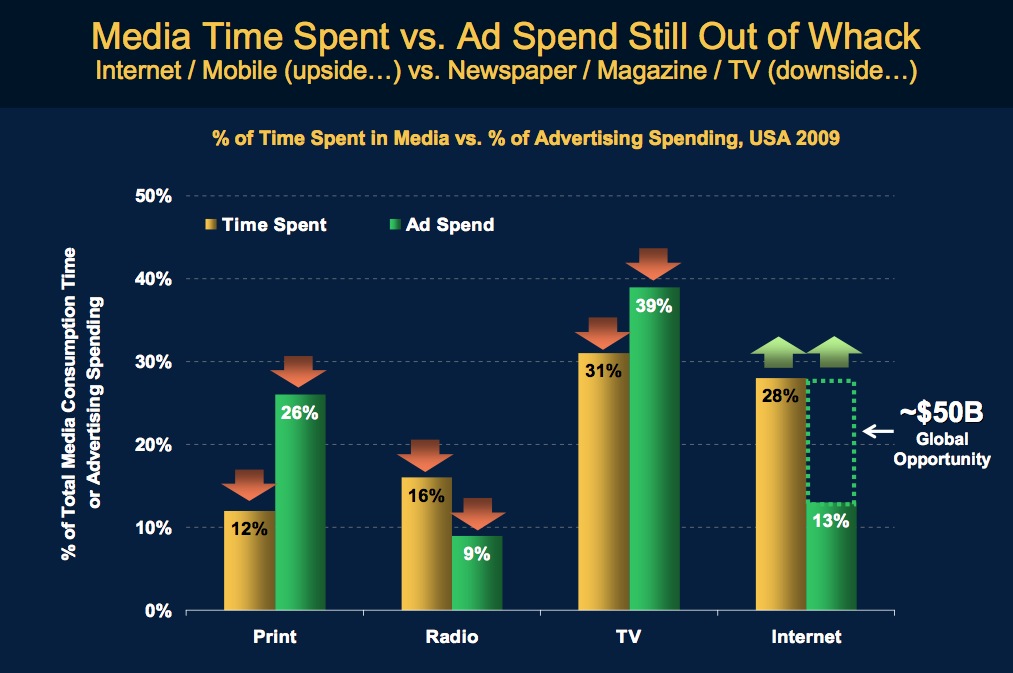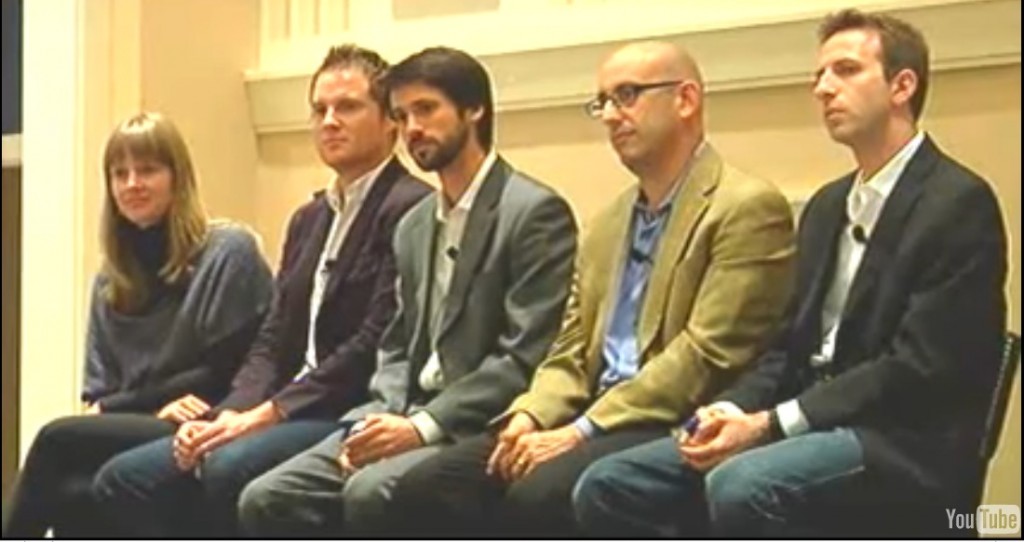Freakonomics: Are Economists Smarter Than You?
November 30, 2010
 University of Chicago economist Steven D. Levitt has made a surprisingly handsome living out of his knowledge of basic economic principals. Levitt is the author, with Stephen J. Dubner, of the bestselling book, Freakonomics, which revels in all kinds of quirky stories united by their economic fundamentals.
University of Chicago economist Steven D. Levitt has made a surprisingly handsome living out of his knowledge of basic economic principals. Levitt is the author, with Stephen J. Dubner, of the bestselling book, Freakonomics, which revels in all kinds of quirky stories united by their economic fundamentals.
Freakonomics was released in 2005 and became a freakish bestseller. That lead to the Freakonomics Blog, which is hosted by The New York Times. Here, authors Levitt and Dubner look at “the hidden side of everything.” What they mostly find is a rational explanation for even the most bizarre behavior. That explanation is almost always plain old fashioned self-interest. “People act according to incentives,” summarizes Levitt.
 So you can’t blame Levitt for responding to the incredible interest in how economists analyze the mysteries of the universe with his second book, SuperFreakonomics, with co-author Dubner. The authors note, for example, that men and women will become prostitutes when the pay for the oldest profession rises to a high enough level compared to their current profession.
So you can’t blame Levitt for responding to the incredible interest in how economists analyze the mysteries of the universe with his second book, SuperFreakonomics, with co-author Dubner. The authors note, for example, that men and women will become prostitutes when the pay for the oldest profession rises to a high enough level compared to their current profession.
The Freakonomics franchise has also spawned a podcast, Freakonomics Radio, and even a movie, Freakonomics: The Movie, which opened October 1 of this year. Reviews of the movie, which explores such ideas as paying people to do well in school, have been generally positive. People like Freakonomics, even if they don’t care much for the economic rules beneath it.
Studies have shown that the general public holds strong beliefs that go against fundamental economic principles. For example, economists love free trade; the general public, not so much. Workers correctly perceive that free trade leads to pressure for lower wages when one must compete with workers in other countries who will do the same job for less. They like the less expensive consumer goods they get from foreign countries, but dislike the wage competition.
Economists are also more comfortable with downturns in the economy than the general public. People in general are overly pessimistic when things aren’t going well. Economists tend to take a longer range view of these matters. For example, economists know that housing prices will recover their recent losses, because those prices are ultimately determined by population growth. That’s not much comfort if you’re underwater on your mortgage or unemployed and looking at lower-paying job prospects.
Some people (probably not economists) believe economists think the way they do because they have well-paying jobs and learned their simplistic ideology in school. But a new study by — you guessed it — economists, shows that the economics mindset comes not from education but from intelligence. Smart people think like economists.
The study, entitled “Intelligence Makes People Think Like Economists,” was recently published in the journal, Intelligence. The authors analyzed information from the giant General Social Survey conducted by the National Opinion Research Center. They selected 34 questions to look at where economists in general have strong views, such as “Generally speaking, would you say that America benefits or does not benefit from being a member of NAFTA?” They then correlated the answers with factors such as race, gender, education, and intelligence. Intelligence was based on IQ estimates resulting from vocabulary studies. Any economist would say that vocabulary and intelligence are not the same thing, but it’s as close as the data comes to measuring IQ.
The end result of this complex analysis? “ IQ turns out to be the single strongest predictor of economic beliefs.” The authors go to further lengths and state that, “There is little reason to doubt the straightforward ‘economists are right, the public is wrong’ interpretation of most lay-expert belief gaps.”
IQ turns out to be the single strongest predictor of economic beliefs.” The authors go to further lengths and state that, “There is little reason to doubt the straightforward ‘economists are right, the public is wrong’ interpretation of most lay-expert belief gaps.”
I’m sure the Freakonomics authors would agree. For their take on how the world should be run, I recommend the Freakonomics Radio broadcast entitled, “What Would the World Look Like if Economists Were in Charge?”
STEVE O’KEEFE
News Editor, Minitrends Blog
Source: “Intelligence Makes People Think Like Economists,” Science Direct, 10/13/10
Source: “What Would the World Look Like if Economists Were in Charge?” Freakonomics Radio, 03/23/10
Trend of the Year: Social Shopping
November 29, 2010
 In case you hadn’t noticed, this Thanksgiving marked the tipping point of a major new technology trend: Social Shopping. When you combine the spread of social networking, the market penetration of mobile phones, the desperation of retailers to capture more business, and consumers’ love of the deal, you wind up with Social Shopping.
In case you hadn’t noticed, this Thanksgiving marked the tipping point of a major new technology trend: Social Shopping. When you combine the spread of social networking, the market penetration of mobile phones, the desperation of retailers to capture more business, and consumers’ love of the deal, you wind up with Social Shopping.
Richard MacManus, the founder and CEO of ReadWriteWeb, which is consistently one of the best blogs covering Internet technology trends, recently kicked off a series looking back on the top tech trends of 2010. He begins the series by looking at Social Shopping.
In 2010, we’ve seen the rise of so-called ‘social shopping’ services. They rely heavily on technologies such as social networking, crowdsourcing and smart phone scanners. Here we present five of the main social shopping developments of 2010.
MacManus doesn’t just pick five companies to profile, but five different types of Social Shopping technologies. Who knew there were so many? Here are his top picks, along with examples of companies that have been using these technologies to attract consumers:
1. Daily Deals: Companies that send one or more “deal of the day” messages to subscribers. Examples: Groupon, LivingSocial.
2. Real-Time Shopping: These deep discounts might last for only a few minutes or hours or until supplies run out. Example: Woot.
3. Location Check-In Services: These services offer rewards to people who check in frequently or on certain days. Examples: Foursquare, Yelp.
4. Facebook Shopping: MacManus credits Facebook with enabling Social Shopping through deals with Amazon.com and other retailers.
5. Barcode Scanning: Phone apps that allow you to take a picture of a barcode or QR code with your phone, then search for reviews, deals, or other information on the Internet. Examples: RedLaser, ScanLife.
Last week, we wrote about how Google CEO Eric Schmidt revealed a new feature for Android phones that will allow you to skip the barcode photo and just wave your phone near an NFC chip to learn about deals on a product.
If those aren’t enough leads for you to explore the new world of Social Shopping, then take a look at Mashable’s list of 18 Sites for Social Shopping — and don’t forget to look in the comments for another 18 or so!
Happy Holidays!
STEVE O’KEEFE
News Editor, Minitrends Blog
Source: “Top Trends of 2010: Social Shopping,” ReadWriteWeb, 11/15/10
Source: “SHOPPING SPREE: 18 Sites for Social Shopping & Deals,” Mashable, 08/08/07
Photo by Jenelle/Thriving Ink, used under its Creative Commons license.
Happy Thanksgiving from the Minitrends Team
November 25, 2010
 We have been blogging about technology trends for two months here on the Minitrends Blog, and we’re very grateful for your readership.
We have been blogging about technology trends for two months here on the Minitrends Blog, and we’re very grateful for your readership.
On behalf of all the staff at Minitrends, Technology Futures, Inc., and SixEstate Communications, we would like to wish you a Happy Thanksgiving!
We’ll be back again on Monday with a fresh look at all the trends making the news.
STEVE O’KEEFE
News Editor, Minitrends Blog
Photo by the U.S. Fish and Wildlife Service Northeast Region, used under its Creative Commons license.
TV Brawl: Broadcast, Cable Networks Battle as Viewers Cut the Cord
November 24, 2010
 For the first time since the advent of cable television, the number of subscribers to cable TV is dropping, and it’s leading to some ugly fights as cable and television networks try to protect their turf.
For the first time since the advent of cable television, the number of subscribers to cable TV is dropping, and it’s leading to some ugly fights as cable and television networks try to protect their turf.
For a thorough analysis of what’s going on, you can’t beat Jon Orlin’s coverage of cable’s decline at TechCrunch. Orlin is the production director for TechCrunchTV, and he formerly ran video production at Yahoo! Here are his latest numbers on the decline in cable subscribers:
In Q2 for the industry overall, a record 711,000 subscribers abandoned cable tv, and six of eight operators suffered their worst quarterly subscriber losses ever.
At Technologizer, Sean Captain, a freelance journalist who reports on media and technology for everyone from The New York Times to Iconoculture, says the rumors of cable TV’s demise are greatly exaggerated. Covering the annual Future of Television Conference at New York University last week, Captain opines:
[…C]ord cutting is about as real now as growing new organs in vats. Consumers will do it — but they won’t do it in droves just yet.
He might well have added that existing television providers will not go quietly into that good night, following the music companies who have watched as the market for recorded music has morphed into free online streaming.
On Monday, November 22, a U.S. District Court in New York issued a temporary restraining order prohibiting television streaming service, FilmOn, from re-transmitting over-the-air television broadcasts. FilmOn was sued by TV networks Fox, CBS, ABC, and NBC for re-transmitting their content without their consent.
Editor of The Washington Post‘s “PostTech” column, Cecilia Kang, describes FilmOn’s novel copyright defense as follows:
They point to a copyright exemption for cable television operators that allows them to retransmit broadcast signals by paying a copyright royalty fee.
Essentially, FilmOn is picking up Los Angeles television stations that broadcast over the air, then streaming these stations online. Since rolling out in the United States a few weeks ago, FilmOn has attracted 30 million users. The service is currently free and was still operational at this writing — a day after the restraining order was filed.
Cable TV’s grip on television-watching households is being challenged by Apple TV, Google TV, and a host of smaller competitors that allow people to watch their favorite television shows on a variety of devices through the Internet. TechCrunch’s Jon Orlin recently reported a “shocking statistic… [–] 20% of Internet traffic during peak times in the U.S. is coming from Netflix.” Just yesterday, video darling Netflix announced a new “streaming-only” plan for viewers who no longer need or want DVDs.
Also yesterday, Mike Shields, the digital media reporter for MediaWeek and AdWeek, reports that Viacom is blocking its cable lineup from being streamed by Google TV. Viacom owns Comedy Central, Nickelodeon, and MTV, among other popular cable channels.
Last month, we noted here that even the Consumer Electronics Association thinks TV is “played out.” We’d love to hear your comments about the future of television and the many services that are seeking to displace cable TV as the king of home entertainment.
STEVE O’KEEFE
News Editor, Minitrends Blog
Source: “Internet TV and The Death of Cable TV, really,” TechCrunch, 10/24/10
Source: “Cutting the Cable-TV Cord? Maybe Some Day,” Technologizer, 11/22/10
Source: “FilmOn streaming TV site temporarily shut down by court,” The Washington Post, 11/23/10
Source: “Viacom Blocks Google TV Users,” AdWeek, 11/23/10
Photo courtesy of uzi978, used under its Creative Commons license.
Verizon’s Top Tech Trends for 2011: Really Bad Video
November 23, 2010

CLICK FOR VIDEO: Screen capture from the video, "Verizon Top 10 Business Technology Trends 2011: Video, the New App Darling"
Verizon just released its predictions for the top technology trends of 2011, and it appears that really bad video is on the list for the new year.
The Verizon top trends list was reported by the popular tech site, CIOL, which is short for CyberMedia India Online Ltd. CIOL provides thumbnail descriptions for each of the 10 trends Verizon forecasts. Here’s the shortlist:
- High-IQ Networks Take Center Stage
- Everything as a Service: a ‘Cloudy’ New Mindset
- Seeing Security Through
- Enterprise Apps Go Mobile
- Video, the New App Darling
- Machine to Machine Cacophony Triggers Transformation
- UC&C Becomes More Than a “Buzz Phrase”
- Farewell to IPv4
- Hello to Universal Identity
- Personalization Inspires Innovation
Number five on that list is “Video, the New App Darling.” About this burgeoning trend, Verizon says in a news release announcing the trends:
Video will be among the most engaging business applications to take advantage of higher-capacity wireless networks for face-to face and face-to-machine interaction… [V]ideo will become an essential tool for workers everywhere.
The problem with this prediction is the video used to deliver it. On the Think Forward Blog, Verizon’s business technology blog, Chris Kimm, Verizon’s vice president of intelligent networking, added a post last Wednesday offering a 10-part video series to introduce Verizon’s Top 10 Technology Trends for 2011. The videos, unfortunately, show what we have to look forward to in the coming video onslaught: Very poorly made videos from people who should know better. Click on the graphic at the top of the post to watch Verizon’s video on the video trend, and see if you can spot these Top-10 Amateur Video Mistakes:
- Uses a low-quality webcam instead of a mini-DV cam or other inexpensive, high-quality digital camera.
- Uses only one third of the visual real estate. Two thirds of the screen is black.
- Uses a built-in microphone rather than a lapel mic or boom mic.
- Terrible audio that makes Kimm sound like he’s at the bottom of a Chilean mineshaft and desperately needs a rescue.
- Looks like he’s in a mineshaft. The narrow but long depth of field creates a tunnel-like visual impression.
- Poor quality backdrop. Even a blank wall would have been better. Has about as much charm as a cheap porn video shot in a Motel 6.
- Horrible backlighting. The backlighting increases the contrast and makes it hard to see Kimm’s facial expressions.
- Doesn’t use directional lights. Even a small, desktop lamp directed toward his face would have made the videos much more watchable.
- Doesn’t use a close-up perspective, which is essential for talking-head videos that are most likely being watched on a small screen, such as a Verizon phone.
- No editing. The videos appear to not have been edited at all. How else to explain the opening and closing moments as a super-close-up Kimm turns on, then off, the camera?
Frankly, these videos make Verizon look like one of the lean solopreneur companies we’ve been talking about on the Minitrends blog — the trend of companies that look big but actually have only one employee and no offices. Isn’t Verizon the company with “The Network” behind it?
My new prediction for top tech trends of 2011: Corporate executives getting some training and equipment for making better impromptu videos.
STEVE O’KEEFE
News Editor, Minitrends Blog
Source: “Top technology trends for 2011: Verizon,” CIOL, 11/18/10
Source: “Cloud Strategies, Economy Continue to Underscore Top Technology Trends for 2011,” Verizon press release, 11/16/10
Source: “Verizon Launches 10-Part Video Series on Technology Trends for 2011,” Verizon Business Think Forward Blog, 11/17/10
Screen capture from Verizon Business video is used under Fair Use: Commentary.
New Employment Trend: No Employment
November 19, 2010
 A pair of stories in The Wall Street Journal on Friday, November 19, illustrate a growing trend for startup companies: avoiding hiring any employees.
A pair of stories in The Wall Street Journal on Friday, November 19, illustrate a growing trend for startup companies: avoiding hiring any employees.
Pulitzer-Prize winning journalist, Mark Whitehouse, who recently joined the Journal‘s New York office as a senior economics correspondent after years working in Russia, profiled financial analysis startup, MCAP Research, in Montclair, New Jersey, which epitomizes the lean, new startup environment by eschewing any significant capital investments or hiring employees.
The firm was started two years ago by Efrem Meretab, a native of Eritrea, who gave up his job as a stock analyst to open the ultra-lean company. Whitehouse says,
His experience demonstrates how advances in technology and communications are allowing some small companies to sell products world-wide without creating many jobs in the U.S. or spending much money on things made in the U.S.
Whitehouse cites two main factors driving the company’s lean profile: outsourcing programming to the Ukraine and Pakistan while taking advantage of Amazon’s cloud instead of purchasing servers. We have discussed the trend toward cloud computing in many posts on this blog, but never for the solopreneur.
A related story also written by Mark Whitehouse with Justin Lahart, a former CNN/Money correspondent who covers economics for the Journal, reports that startups are not contributing to the growth in employment usually associated with periods of economic recovery.
The number of companies with at least one employee fell by 100,000, or 2%, in the year that ended March 31, the Labor Department reported Thursday. That was the second worst performance in 18 years, the worst being the 3.4% drop in the previous year.
Startups were first hammered by the recession, with more closing that opening since 2008, then strangled by tight capital markets. Angel investing still has not recovered, according to the Center for Venture Research at the University of New Hampshire, which reports that less has been invested in the first half of 2010 than during the recession years of 2008 and 2009.
In their new book, MINITRENDS, John and Carrie Vanston devote a significant portion of the book to new business opportunities serving a growing work-at-home workforce. In a previous post on this blog, we discussed how cloud computing has enabled temp agencies to apply the same just-in-time inventory to the workforce that auto companies have brought to manufacturing.
Without capital to grow their businesses, and with access to a global marketplace of contract workers, companies have learned to prosper by renting rather than buying assets and outsourcing services. If the Vanstons are correct — and their track record (PDF) on such predictions is excellent — the solopreneur will no longer be a trend coming out of this recession but the new standard operating procedure.
We welcome your thoughts about this ultra-lean method of bootstrapping high-tech businesses.
STEVE O’KEEFE
News Editor, Minitrends Blog
Source: “Starting a Global Business, With No U.S. Employees,” The Wall Street Journal, 11/19/10
Source: “Few Businesses Sprout, With Even Fewer Jobs,” The Wall Street Journal, 11/19/10
Photo courtesy of psd (Paul Downey), used under its Creative Commons license.
Google’s Schmidt: “Bump to Buy” Coming Soon to Mobile Phones
November 18, 2010

Google CEO Eric Schmidt holding a new "device" that includes a "bump to buy" NFC chip at the Web 2.0 Summit.
Google CEO Eric Schmidt is keen on mobile phones. He says that people don’t realize how powerful these devices are, and claims they are “more powerful” than desktop computers.
Schmidt made these remarks on November 15 at O’Reilly’s Web 2.0 Summit in San Francisco, where he was grilled for almost an hour by Tim O’Reilly and John Battelle. Both O’Reilly and Battelle come from the world of publishing. O’Reilly is founder and CEO of O’Reilly Media, a well-known publisher of computer books and conference organizer. Battelle was a co-founder of Wired magazine and currently runs Federated Media, an online advertising firm. A video of their conversation with Eric Schmidt is available through the Web 2.0 Summit website.
Early in the interview, Schmidt pulls out a prototype “device” which looks very much like a mobile phone. He explains how this new device, which will appear on the market in the coming weeks, will use a “near field communication” (NFC) chip that you can wave or bump against something to get information about a product, person, or place.
With current 3G smartphones, you can take pictures with your phone and use those pictures to search the Web for information about a product or place. On another blog I write for, the SixEstate blog, online journalism expert Rachelle Matherne describes how smartphones can snap pictures of quick response barcodes (“QR codes”) and get additional information about an advertiser’s products.
The hang-up is that using QR codes requires adding an app to your phone, then taking a picture of the barcode with your phone’s camera. Near field communication eliminates all that fuss. You just bump the item with your phone and instantly retrieve all kinds of information. You can bump a book and discover other books by the same author, or deals offered by multiple vendors on the same product.
The bump gets even better when you attach it to a digital wallet. The new smartphones will enable consumers to “bump to buy,” according to O’Reilly. In his coverage of the Web 2.0 Summit, InformationWeek editorial director, Fritz Nelson, says that “bump to buy” will take time to spread:
This requires an ecosystem of merchants, payment providers and payment processors, and while this ecosystem is starting to form, it’s still evolving. Schmidt later told a gathering of reporters that broader acceptance is probably a year away.
Schmidt, who usually wears a severe demeanor, was positively giddy about the potential of the next generation of mobile phones. He says they are more personal, more secure, and more powerful than desktop computers, and that “mobile first” is his mantra, meaning that the phone will be the focus of Google’s strategy in the coming years.
How important are Schmidt’s remarks to driving the industry? Of the 25 videos posted from the Web 2.0 Summit as of this writing, Schmidt’s interview has been viewed over 120,000 times. Compare that to Zynga’s Mark Pincus — and most of the other well-known speakers — whose videos have been watched only a few hundred times, and you can see that Google is still the engine of innovation driving the new economy.
STEVE O’KEEFE
News Editor, Minitrends Blog
Source: “Web 2.0 Summit 2010: A Conversation with Eric Schmidt,” OReillyMedia, 11/15/10
Source: “Google CEO Schmidt Says NFC To Extend Android Acceptance,” InformationWeek, 11/15/10
Source: “QR Codes and the New Journalism,” SixEstate Blog, 11/09/10
Photo: Screen capture from “A Conversation with Eric Schmidt,” courtesy OreillyMedia.
Meeker’s Top Internet Trends: Online Advertising Undervalued
November 17, 2010

Mary Meeker runs the global technology research team as a managing director of investment giant, Morgan Stanley. When Meeker talks, the market listens, and she was saying plenty at the recent Web 2.0 summit in San Francisco.
On Tuesday, November 16, Meeker shared her picks for the top Internet trends, backed up with some of the most cleverly crafted stats I’ve ever seen. Among the revelations: Print publications occupy only 12% of the amount of time consumers spend with media, yet account for 26% of advertising spending. This does not bode well for the future of advertiser-supported print media.
On the other hand, Meeker’s stats show that the Internet takes up 28% of people’s time for media, yet draws only 13% of advertisers’ budgets. She says there’s $50 billion too little being spent in online advertising.
Mashable’s Ben Parr summarized Meeker’s misallocation thusly: Facebook is “the most under-monitized asset in online advertising.” According to Meeker’s stats, social networking is earning a mere 55 cents per thousand impressions (CPM) from advertisers. Compare this to CPM’s of about $2.70 for the majority of websites that accept display advertising. Also grossly undervalued, according to Meeker, are display ads embedded in email, which earn only 89 cents CPM.
Parr was modest enough not to mention that Mashable ranked as one of the Top 10 brands on Twitter, coming in at position number 10 — right behind the National Basketball Association (NBA) and just ahead of Martha Stewart.
Another slide in Meeker’s presentation compared the number of people who “like” brands on Facebook with the number of viewers for popular television programs — and the CPMs associated with those TV shows. Zynga’s Texas Hold’em Poker leads the likes on Facebook with 27.2 million, which is roughly equivalent to the number of American Idol viewers. Whereas display ads on Facebook cost a mere $0.55 per thousand impressions, American Idol charges $30. We profiled Zynga founder Mark Pincus here on the Minitrends blog last month, where he talked about the importance of good eating habits.
Some of the other trends mentioned in the book, MINITRENDS, which also caught Mary Meeker’s eye, include the growth of virtual worlds. Meeker favorably compared the Japanese social networking site, Tencent (637 million active users), with Facebook (620 million annual visitors). The difference? Tencent is a virtual world using avatars. The shocking stat that caught my attention: over $1.4 billion in virtual goods have been sold on Tencent! Those are real yen shelled out for virtual merchandise such as outfits for avatars.
Another shocking stat: Seven of the top 15 Internet companies by market capitalization in 2004 are not in the top 15 today. Punishment is swift for those who do not stay on the edge of innovation. Case in point: Nokia and RIM held 70% of the smartphone market as recently as 2008. Today, that market share has dropped to 52% while Google (Android) and Apple (iPhone) have gone from nothing to gobbling up 42% of the market.
Despite a Morgan Stanley copyright notice, Mary Meeker’s slideshow seems to be everywhere online. You can find it at Mashable and TechCrunch, along with some very cursory commentary.
STEVE O’KEEFE
News Editor, Minitrends Blog
Source: “The Unprecedented Rise of Apple iOS and Other Internet Trends,” Mashable, 11/16/10
Source: “Mary Meeker On Ten Questions Internet Execs Should Ask And Answer,” TechCrunch, 11/16/10
Image from Morgan Stanley, used under Fair Use: Commentary.
Is Microsoft’s Kinect the New Trend in Advertiser Black Ops?
November 16, 2010
 The chief operating officer for Microsoft’s Xbox division ignited a firestorm of controversy last week when he told a room full of digital entertainment investors about the capabilities of the Xbox’s revolutionary new motion controller, Kinect, to target advertising based on what built-in cameras see.
The chief operating officer for Microsoft’s Xbox division ignited a firestorm of controversy last week when he told a room full of digital entertainment investors about the capabilities of the Xbox’s revolutionary new motion controller, Kinect, to target advertising based on what built-in cameras see.
Kinect launched November 4 as a hands-free device for playing video games. Unlike other video game consoles, such as Wii and PlayStation, Kinect allows users to play Xbox games without having to hold a motion-detecting controller. Kinect senses your motions using multiple cameras and infrared detectors.
Dan Gallagher, technology editor for The Wall Street Journal‘s MarketWatch subsidiary, reported on Dennis Durkin’s remarks on the Journal‘s Digits blog last Thursday. Gallagher quotes Durkin as saying that Microsoft “can cater which content we present to you based on who you are.” The Journal, part of Rupert Murdoch’s News Corp, which owns Fox News among many other media assets, has become an unlikely privacy champion after the newspaper’s “What They Know” series last July blew the lid off privacy invasions by the Internet’s top websites.
Immediately after the unfavorable coverage in The Wall Street Journal, Microsoft issued a statement contradicting Durkin’s remarks. The statement, which strangely does not appear on Microsoft’s Xbox Press page, reads in part:
Xbox 360 and Xbox LIVE do not use any information captured by Kinect for advertising targeting purposes.
However, other websites have published more of Dennis Durkin’s remarks, and it appears unlikely that his remarks at the BMO Capital Markets Digital Entertainment Conference were a simple slip of the tongue.
Bill Levine at TopTechNews quotes the Xbox CEO as stating the controller can tell “how many people are in a room when an advertisement is shown,” and that it can use “face recognition and voice recognition” to determine such things as the gender of players, whether or not they are standing, and how excited they are.
Molly McHugh at the Digital Trends blog quotes Durkin as stating flatly that data gathered by the Xbox’s cameras can be used to customize ads. Microsoft can “be more targeted about what content choices we present; what advertising we present….”
The capabilities of the Xbox Kinect to spy on users and then use that information to customize ads is part of a growing technology trend. The screens we watch at home and at work are now watching us — and using that information to customize the content and the ads we see.
In September, two of The Wall Street Journal‘s correspondents in Japan, Daisuke Wakabayashi and Juro Osawa, reported on a futuristic vending machine in a train station there that uses cameras to determine the gender and age of people using the vending machine. The machine then recommends selections based on that information.
The vending machine, manufactured by NEC, records such things as which people looked at which items, who bought what, and how “engaged” they were with the display. According to the Journal‘s reporters:
The company said its system can identify people’s gender correctly about 90% of the time and guess a person’s age within a 10-year range about 70% of the time.
The Journal notes that there are few, if any, laws governing the collection, storage, and use of images and information gathered by such devices. The technology is expected to show up in retailers’ window displays soon. Those displays will change the merchandise being shown depending on who is looking at them.
These kinds of invasions of privacy were anticipated in the new book, MINITRENDS, by John & Carrie Vanston. The authors suggest that privacy protection will be one of the booming technology trends in the coming two-to-five years, and devote a significant portion of the book to describing opportunities for entrepreneurs in this rapidly evolving segment of the economy.
What do you think about store displays that watch you and record your image and actions as you shop? Do you think they should be allowed? Do you think they can be stopped? Do you see any technologies coming in the next two to five years that could protect people from these devices? We’re anxious to hear your comments on these matters.
STEVE O’KEEFE
News Editor, Minitrends Blog
Source: “Is Your Xbox Console Watching You?” The Wall Street Journal, 11/12/10
Source: “Big Brother Kinect Could Be Watching You at Home,” TopTechNews, 11/12/10
Source: “Kinect’s camera could record data for advertisers,” Digital Trends, 11/12/10
Source: “Billboards That Can See You,” The Wall Street Journal, 09/03/10
Image courtesy of quatro.sinko, used under its Creative Commons license.
Blackbaud Videos Reveal Trends in Nonprofit Technology
November 15, 2010

CLICK FOR VIDEO: Panel on Social Media for Nonprofits from the 2010 Blackbaud Conference on Nonprofit Technology
Last week, I broached the topic of how nonprofits are capitalizing on trends in technology to reach constituents through social networking. Today, I’m going to take the discussion up a notch and look at the fountainhead of many tech trends for nonprofits: Blackbaud, Inc.
Blackbaud was founded in 1981 with the purpose of providing technological support to nonprofit organizations. The company’s growth since has been phenomenal. Headquartered in Charleston, South Carolina, Blackbaud now employs more than 2,000 people worldwide. The company went public in 2004 and is traded on the NASDAQ exchange under ticker symbol BLKB.
Shortly after going public, Blackbaud hired Marc Chardon, a former CFO for Microsoft and manager of Microsoft France, as the company’s new president and CEO. Just last week, Blackbaud was named one of Forbes 100 Best Small Companies in America, a ranking based largely on exceptional financial performance.
Blackbaud has become an enormous driver of technology trends in the nonprofit sector. Last month, the company held its annual conference on nonprofit technology, drawing more than 2,200 people to Washington, D.C., for an action-packed program dominated by seminars on social networking.
This month, Blackbaud has made many of these programs available for free viewing on its BlackbaudTV channel on YouTube. These videos are both inspiring and educational for anyone interested in technology trends. Here are some of the highlights:
Global Trends and What They Mean to You
Marc Chardon, President and CEO of Blackbaud
Becoming a Networked Nonprofit: The Road to Effective Use of Social Media
Allison Fine & Beth Kanter, authors of The Networked Nonprofit
Social Media for Nonprofits
Claire Williams Diaz, Social Innovation at Twitter
Noah Everett, Founder of TwitPic
Matthew Mahan, Vice President of Impact at Causes
Geoff Livingston, Co-Founder of Zoetica
Brian Dresher, Mashable (formerly with USA Today)
Social Media: Paint by the Numbers
Holly Ross, Executive Director, NTEN: The Nonprofit Technology Network
The Nonprofit Trust Agent
Chris Brogan, New York Times bestselling co-author of Trust Agents
Most of the videos are an hour long, except for the Chris Brogan interview, which is a five-minute ambush video in the hallway of the conference center. The first video with Marc Chardon is a panel that covers such trends as social media, radical transparency, and the need for nonprofits to demonstrate ROI. The panel on social media for nonprofits is terrific, with presenters limited to five minutes to take their best shots, followed by the audience Q&A.
For access to all the BlackbaudTV videos — including a five-minute interview with Mark Zuckerberg’s engaging and articulate sister, Randi, about five things nonprofits can do to supercharge their Facebook pages — visit the BlackbaudTV page on YouTube.
STEVE O’KEEFE
News Editor, Minitrends Blog
Source: “Blackbaud Conference 2010: 5 Must-See Presentations,” Social Media 4 Nonprofits, 10/24/10
Source: “Reflections from Independent Sector and Blackbaud Conferences,” Beth’s Blog, 10/26/10.


